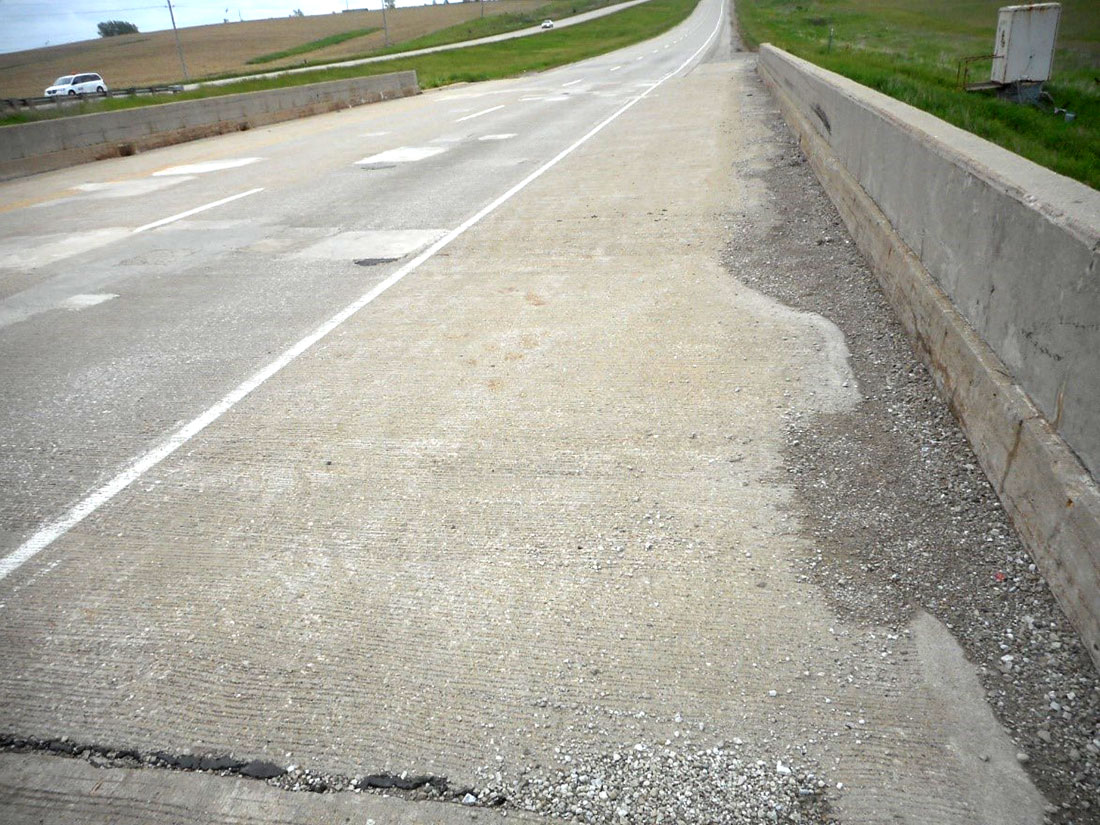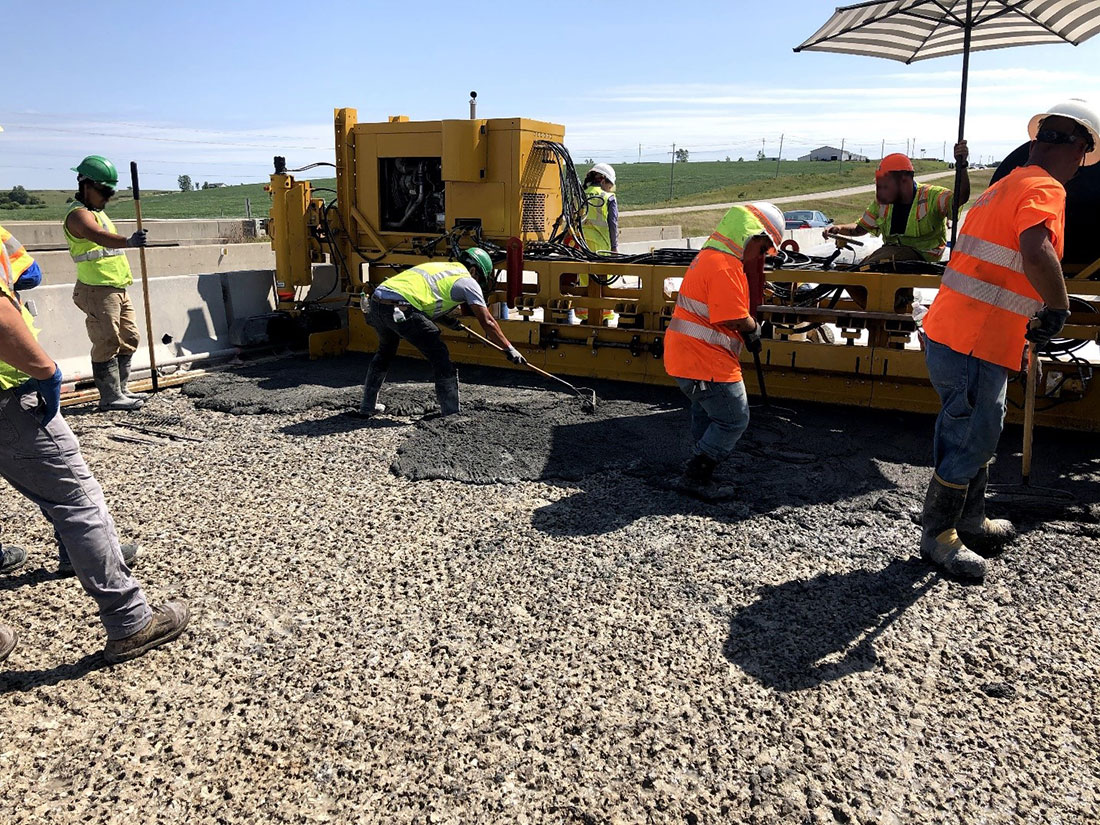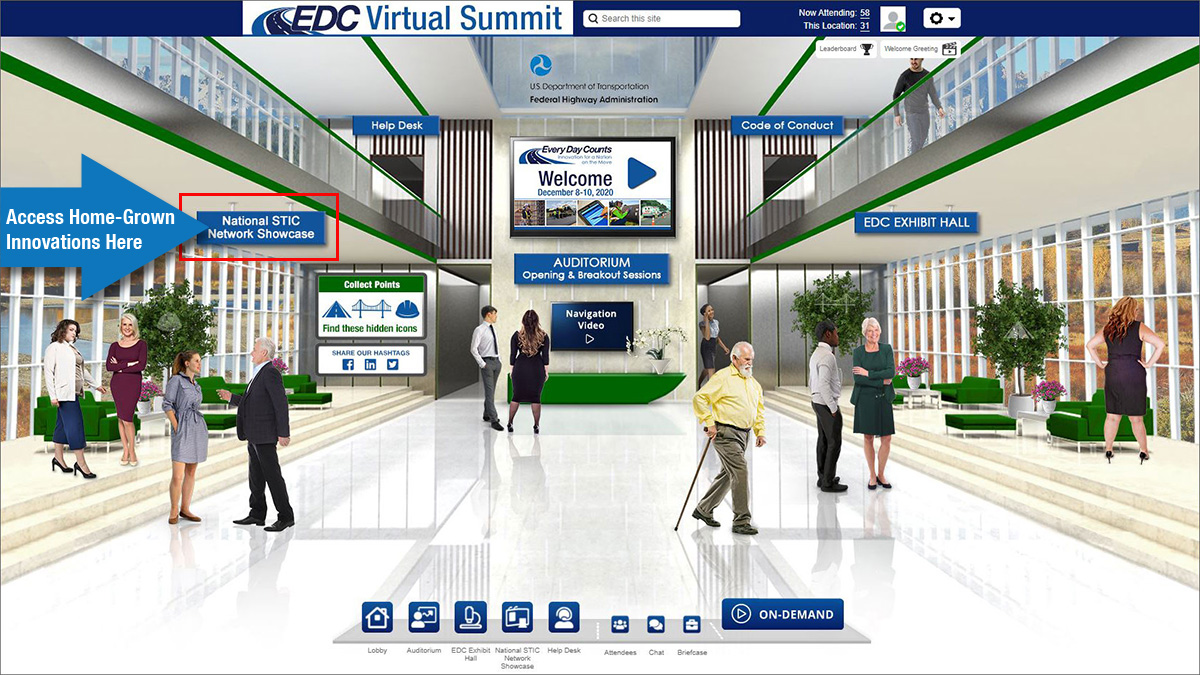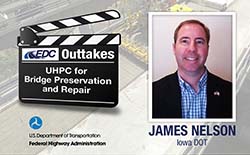April 22, 2021
Innovation of the Month:
Ultra-High Performance Concrete for Bridge Preservation and Repair
Ultra-High Performance Concrete (UHPC) is a high durability, cost-efficient material that is being used to improve life-cycle cost performance in bridge preservation and repair (P&R). Last week, we discussed how the New York State Department of Transportation used UHPC link slabs for bridge P&R, and this week, we'll look to the Midwest to see how Iowa used a UHPC overlay to extend the service life of a deteriorating bridge deck.
The state and local bridge owners in Iowa are familiar with UHPC. The first bridge in the United States to use UHPC was constructed in Wapello County, IA in 2006, and similarly the first US UHPC overlay was installed in Buchanan County, Iowa, in 2016.

The Iowa Department of Transportation (Iowa DOT) recently explored how to use UHPC to address a bridge linking the city of Prairie City to the State capital, Des Moines, and southeast IA. The bridge deck had exhibited repeated concrete spalls caused by corroding reinforcement and deteriorating concrete, which resulted in numerous deck patches over time. Iowa DOT decided to take a more permanent approach to extend the service life of the deck without having to do a costly and disruptive deck replacement by using a UHPC bridge deck overlay.
UHPC applied as an overlay would not only provide a long lasting and highly durable wearing surface, but it would waterproof the deck, cutting off water intrusion, which causes the reinforcing bars to corrode. UHPC is also suitable for repairing spalls, which potentially could remove a separate deck repair step. Finally, the durability properties of UHPC suggested it would provide a service life that exceeds that of conventional overlay materials.

Because the bridge's original design accounted for a future wearing surface, the UHPC overlay was applied on top of the existing deck without having to remove any existing deck thickness other than the hydroscarification to ensure a quality bond. The choice of doing minimal concrete removal and placing the UHPC on top of the deck expedited deck preparation.
The construction was carried out in two stages, keeping one lane open to traffic at all times. The project took just over two weeks to prepare the deck, place and cure the UHPC.
Iowa DOT expects the new UHPC overlay to provide many decades of service life with little to no deck maintenance. While the traffic impacts were similar to an overlay operation using conventional materials, the mechanical and durability properties of UHPC indicate that it will outperform conventional materials, potentially providing as much additional service life as a new deck but with far fewer inconveniences to the traveling public.
To learn more about UHPC for bridge preservation and repair, contact Zach Haber or Mark Leonard, EDC-6 UHPC team co-leads.
EDC Outtakes—Ultra-High Performance Concrete for Bridge Preservation and Repair
EDC Outtakes—a series of short interview videos—give insight into the current round of EDC innovations from State practitioners and FHWA personnel. In our latest edition, James Nelson, Iowa DOT Bridge Engineer, discusses how Iowa DOT is expanding its current UHPC program into Bridge P&R and the value it sees in doing so.
Keep reading EDC News for future editions of EDC Outtakes!
Learn More About the Work Zone Data Exchange Project
On April 29, from 12:00-1:30pm ET, join FHWA for a webinar to learn about the Work Zone Data Exchange project (WZDx). WZDx is an open-source data specification that facilitates collecting live, accurate, and actionable work zone data by transportation agencies and sharing it among third parties, such as mapping companies. The webinar will provide a comprehensive look into the current status of the WZDx project, the need for safer work zones and open-source data, how state and local agencies are implementing the WZDx Specification, current efforts to spur adoption nationwide, and how to get involved. The webinar will also introduce the WZDx–Put Work Zones on the Map awareness and partnership campaign. The partnership and awareness campaign will educate and engage potential partners on the capabilities, benefits and progress of the Work Zone Data Exchange (WZDx). This effort is designed to work in tandem with the National Work Zone Awareness Week (NWZAW) campaign.
To learn more about National Work Zone Awareness Week, please contact Jawad Paracha with the FHWA Work Zone Management Team.
Discover Home-Grown Innovations from Around the Country

Are you interested in homegrown innovations being used by your peers in other parts of the country? Check out the National STIC Network Showcase, a component of the EDC-6 Virtual Summit. Over 200 innovations, submitted by State DOTs, Local Agencies, and other STIC members, are grouped into eight topic area categories for easy navigation. This site features a convenient one-time registration that will allow you to continue accessing information throughout 2021.
The showcase prominently features several innovations focused on construction. Learn about the Preble Co, OH, Concrete Bridge Beam Launcher, which provides bridge crews project scheduling flexibility and saves up to $25,000 per year as compared to contracting a private crane operation; the Vermont Agency of Transportation's first use of Geosynthetic Reinforced Soil-Integrated Bridge System (GRS-IBS), an innovative technology that allows for rapid project construction and allowed a replacement project to remove the need for 190 linear feet of structure; Maine DOT's Composite Arch Bridge System, which provides a light weight, cost effective, and durable bridge system for short and medium spans; and the St. Clair County, MI, Road Commission Pre-Cast Concrete Connection work, which uses ultra-high performance concrete to create smaller, more resilient joints between precast concrete components.
Celebrate the ingenuity of your peers and read about these innovations—developed and deployed in-house at transportation agencies nationwide. Additionally, we invite you to watch the one-hour presentations on-demand that feature many of these and other innovations.

About EDC
Every Day Counts, a State-based program of the Federal Highway Administration’s Center for Accelerating Innovation, works with State, local, and private sector partners to encourage the adoption of proven technologies and innovations to shorten and enhance project delivery.



